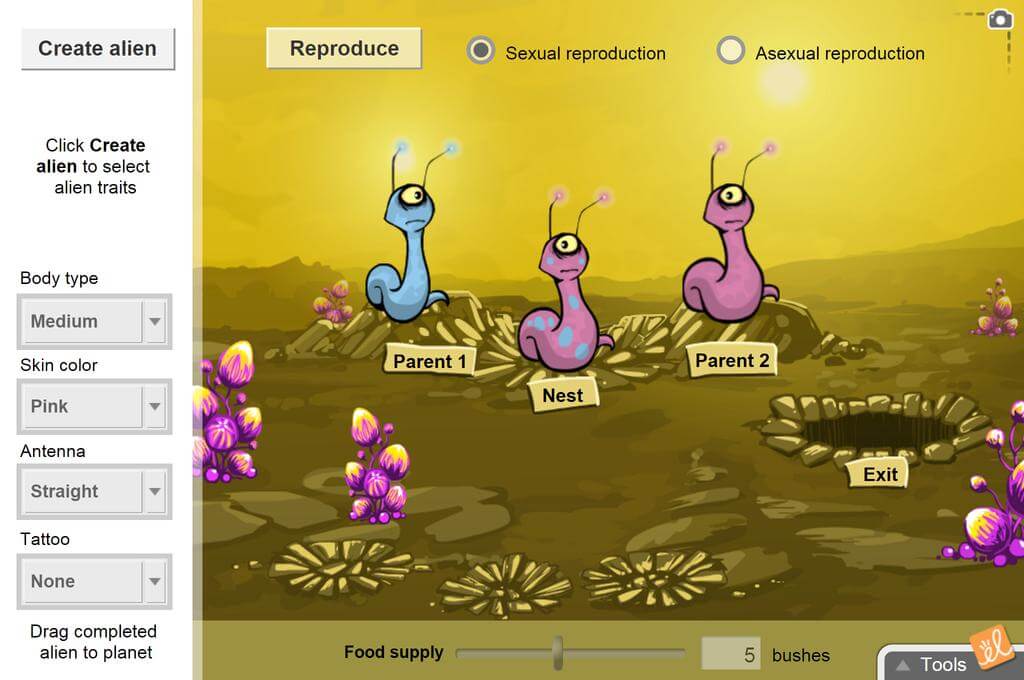
Students love to learn about themselves. Why do they have blue or brown eyes? What caused the curly or straight hair? How tall will they grow to be as adults? Heredity and genetics are fascinating. Project-based learning gives students the opportunity to investigate heredity and inheritance science with real-world implications. They develop knowledge and skills while engaging in projects that are personally meaningful.
Understanding traits: The building blocks of heredity
What is a trait? Every living thing has genetic traits, simply features or characteristics expressed from genes. Because traits aren’t just physical qualities but also tendencies someone or something has, traits can be influenced by the environment. These acquired traits include knowledge and skills.
The definition of a trait is genetic information passed to the next generation through inheritance. Hair color and handedness are inherited traits in people. Plants have traits, too, including stem length and leaf pattern.
What is heredity?
Parents pass down traits to offspring through sets of genes, which is heredity. How are those traits passed from parents to children? There are four basic types: dominant, recessive, co-dominant, and intermediate. The inheritance patterns of genetic variations and combinations result in specific characteristics.
Dimples, freckles, and having a second toe that is longer than the first toe are all examples of a dominant trait. Recessive traits can skip generations. Red hair is a recessive trait. Certain medical conditions, such as cystic fibrosis and albinism, can be passed down through heredity.
Engaging students in the fascinating world of genetics
There is so much for students to explore with acquired and inherited traits. Students are eager to dive into the subject because the topic directly relates to real life. Creating project-based lesson plans about inheritance that engage and motivate students is easy with virtual labs. Using simulations to teach inheritance allows students to experiment and draw conclusions about genetics and heredity that would otherwise be impossible in a classroom.
Virtual simulations create results for teaching inheritance
Using online simulations, like ExploreLearning Gizmos, to teach inheritance also saves time and reduces materials. Every Gizmo offers lesson planning materials, including teacher guides, vocabulary sheets, and student worksheets. Our Inheritance Gizmo allows students to experiment and understand the difference between acquired and inherited genetic traits. Students breed different aliens to observe how traits are passed down from parents to children and observe different types of inheritance.

Inheritance Gizmo
Learning objectives include:
- Observe that offspring resemble their parents.
- Compare the results of sexual and asexual reproduction.
- Distinguish between traits that are determined by genes and those that are acquired.
- Understand that acquired traits are not passed on to offspring.
- Observe different types of inheritance:
- Inheritance of codominant traits
- Inheritance of dominant and recessive traits
Ready to elevate your science lessons?
Gizmos Investigations are now available! These interactive, scaffolded science lessons combine Gizmo simulations with built-in student questioning and just-in-time feedback to support sensemaking practices. Designed to meet next-generation science standards, they help all students actively engage in the doing of science. Explore how Gizmos Investigations can transform your classroom today!
Teachers love the results from project-based learning with the Inheritance Gizmo. Don’t just take our word for it! Here’s what some teachers had to say:
- “The tattoo feature in the Gizmo really helped drive home the point that artificial markings on biological parents are not passed down to offspring. The students were curious about this and started asking great questions, like if birthmarks were inherited or acquired.”
- “I was super impressed by what they created and how the Gizmo was able to help make genetics concepts more comprehensible. I had a lot of ESL students in the class, too, so those nonlinguistic representations in the simulation served as a great high-yield instructional strategy.”
- “The worksheet that accompanied the Gizmo was very helpful to scaffold and chunk the content that we covered.”
With 550+ virtual simulations, bringing science and math lessons to life is a breeze with Gizmos. Check out some other labs and STEM Cases to help reinforce inheritance concepts in your classroom!
How can you find more Gizmos to use with your students? It’s simple. Take a trial.
